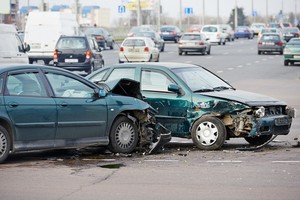Car Accidents: Proving Fault
Overview Car Accidents
In every car accident claim, the parties must settle the issue of who was at fault for the accident – or in terms of the law – which party was negligent. In many cases, identifying the party at fault is a matter of clear common sense. However, when trying to pursue a claim for compensation against an insurance company or defense law firm, your argument that their insured or their client was negligent or at fault for the accident could be strengthened if you can describe, “officially” speaking, how their insured or client was responsible for the accident.
Using Police Reports
When police response to the scene of a car accident, they will almost always create a written accident report. You can contact the police department that created the report for a copy of the report. In some cases, the report will state the officer’s opinion or determination that a party involved in the accident violated a traffic law and that the legal violation was the cause of the accident. If an officer did determine that a party committed a traffic violation, they very likely issued a warning or a citation for that infraction. In other cases, the report may simply set forth the officer’s opinion that a party’s negligent behavior caused the accident, without specifically stating that such negligent behavior violated some traffic law. However, a police report that clearly places fault for an accident at the feet of one or more of the parties involved in the accident is very strong evidence that those parties were legally negligent and therefore liable for the accident.
Importance of State Traffic Laws
Even if you don’t have a police report that states that the other party in the accident violated some traffic law, you may still be able to use evidence to create a convincing case that the other party did violate a traffic law. Every state has a set of laws that govern how drivers, motorcycle riders, bicyclists, and pedestrians should use the roads. These laws are often called the “vehicle code,” although they contain provisions that applies to all users of the roads. Your state’s department or registry of motor vehicles may also have a document that contains a simplified version of the vehicle code, along with examples of behavior that complies with or violates the traffic laws.
Many states’ vehicle codes are broken down into general subtopics, such as speed limits, right of way, or traffic controls – you can search these subtopics to more quickly finds traffic laws that are directly applicable to your accident. If you find a statute that you believe applies in your accident, you should copy both the exact text of the statute along with the statute’s citation to provide to the insurance company or defense law firm that you are dealing with.
Cases Where Fault Is Usually Not in Doubt
There are some accidents where common sense dictates that in almost all cases one party was responsible for the car accident; in some states, there may even be a rebuttable legal presumption that one particular party was responsible for a certain kind of accident. Examples of these kinds of accidents include rear-end accident and left-turn accidents.
In rear-end accidents, the driver of the vehicle in the rear is almost always responsible for the accident, since the law requires every driver to be able to safely stop; if they rear-end the car in front, they were not driving in a manner to safely stop. In rare cases, the driver of the rear vehicle may be able to claim that your own negligence or the negligence of a third-party was partially responsible for the accident, such as if you have to stop suddenly due to another party’s actions, or if you fail to maintain your brake or tail lights or failed to move your stopped vehicle off the road.
In left-turn accidents, the driver making a left turn is almost always responsible for the accident, especially when colliding with a vehicle traveling straight in the opposite direction. There are a few exceptions to this rule, including if the other vehicle was traveling at an excessive rate of speed or ran a red light, or if the turning vehicle did so when it was safe but something forced the driver to slow or stop.
Contact a Philadelphia Personal Injury Lawyer to Discuss Your Car Accident Case in Pennsylvania
Did you or a loved one sustain serious injuries due to a car accident in Pennsylvania? Don’t let the medical bills pile up while you wait for the negligent party or their insurance company to do the right thing. Right now, you need an aggressive personal injury attorney on your side, fighting to get you the compensation you need, want, and deserve. The skilled attorneys at the Marrone Law Firm, LLC represent clients injured because of car accidents in Philadelphia, Center City, University City, and throughout Pennsylvania. Call (866) 732-6700 or fill out our online contact form to schedule a free consultation about your case. We have an office conveniently located at 200 S. Broad St., #400, Philadelphia, PA 19102 as well as offices in Cherry Hill, NJ.
The articles on this blog are for informative purposes only and are no substitute for legal advice or an attorney-client relationship. If you are seeking legal advice, please contact our law firm directly.
